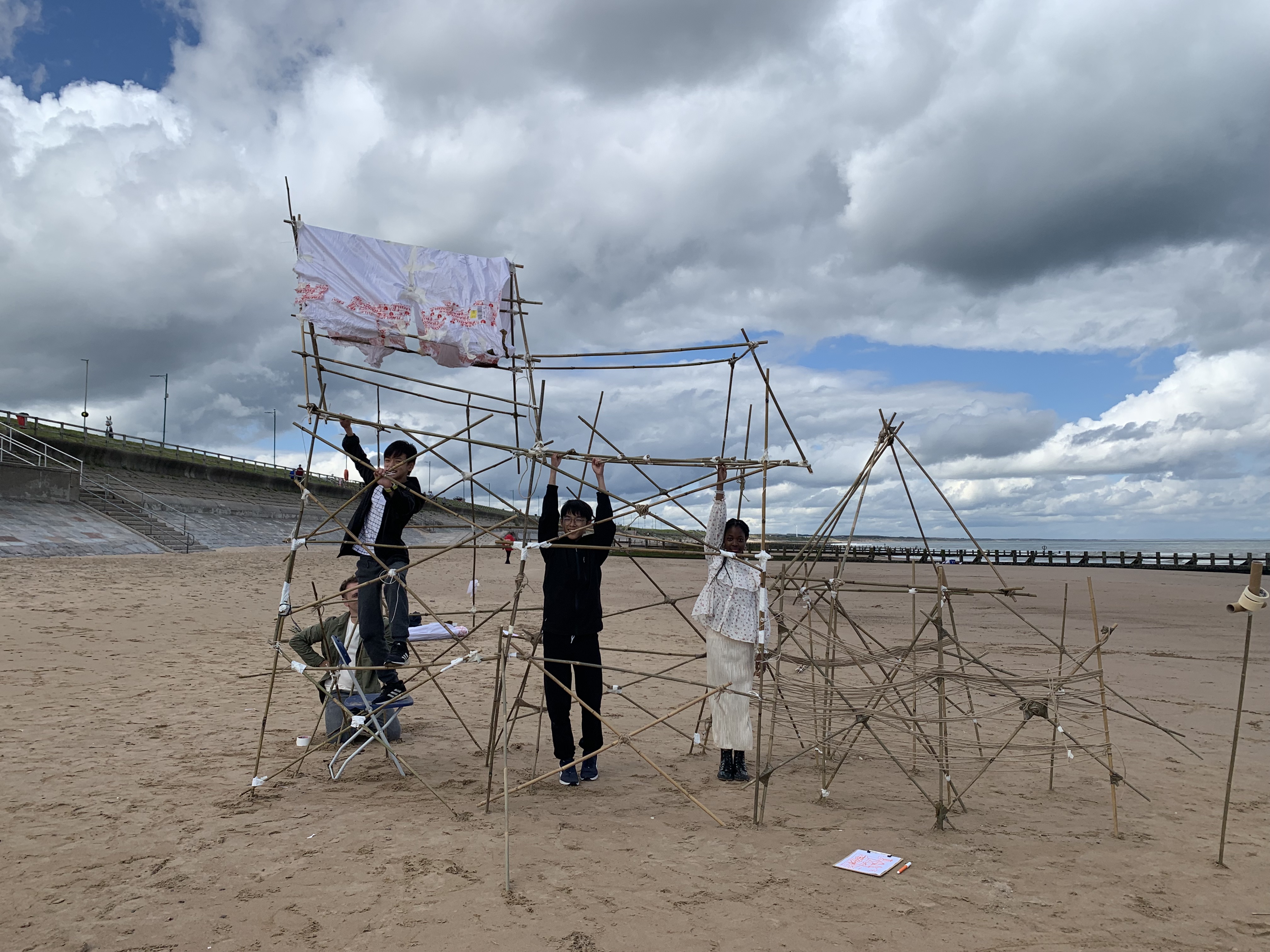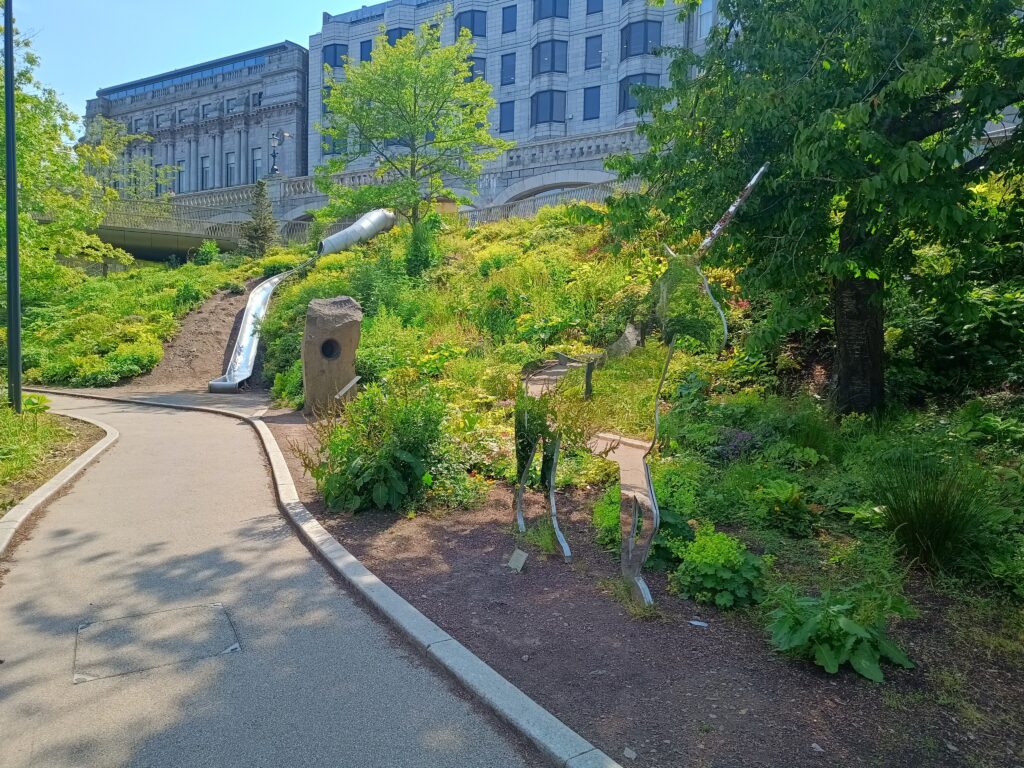Image credit: Aberdeen Young Ambassadors. Aberdeen City Council Creative Learning
Exploring Aberdeen City Council’s journey through involving young people in their local development plan, key public space masterplans and ongoing involvement from a group of Young Ambassadors.
The rationale for taking a child-friendly approach
Aberdeen City Council’s commitment to child-friendly planning spans over a decade and has evolved through strategic learning, experimentation and cultural change. This began prior to statutory duties in Scotland to involve children and young people in planning. For example, the Council’s planning department won the Scottish Award for Quality in Planning in 2014 for their extensive youth engagement programme and the city’s initial involvement with UNICEF’s Child Friendly Cities initiative helped embed a children’s rights-based approach across the Council.
Since then, creating a ‘people-friendly’ city has become an integrated priority in place-making and planning policy processes. This has not only been part of the Local Development Plan, but also the City Centre Masterplan and later extended to incorporate the Beach Masterplan, both of which place play and young people’s needs at the heart of major redevelopment. Cross-departmental collaboration, particularly with the Council’s Creative Learning team proved instrumental in engaging young people creatively and consistently. The City Centre & Beach Masterplan Summer 2023 Project Sheets show how some of this work came together.

Final workshop structure Beach Masterplan Engagement. Credit: Aberdeen City Council Creative Learning
Thus work has only been possible due to clear political leadership, resource commitment and an intentional effort to work differently. The Council has commissioned artists and play consultants, and supported the emergence of a core group of Young Ambassadors—children and young people who now play an ongoing role in shaping, championing and communicating Aberdeen’s vision for a more inclusive city.
Union Terrace Gardens: from avoiding to embracing
At the heart of Aberdeen city centre, Union Terrace Gardens (UTG) has undergone significant regeneration. Poor lighting and accessibility issues previously made areas of the park feel unsafe and difficult for visitors with reduced mobility to access. The redevelopment has positioned play and cultural life centrally.
Engagement with children and young people occurred through schools and groups such as the Imagineers (Children’s Parliament). Young people reviewed plans, added feedback and influenced key design decisions—especially around play.
Today, UTG is a favourite spot for young people. In their words:
‘It’s a really good place to hang out and enjoy ourselves. It works for everyone in the community [and] it’s really good for picnics‘
They further praised how inclusive and active the space now feels, particularly during events such as Spectra, Scotland’s festival of light and casual activities like skating or football.



Play and public art integrated into the landscape of Union Terrace Gardens. Credit: A Place in Childhood
The Beach Masterplan: creative co-design at scale
The Beach Masterplan represents a new benchmark in large-scale co-design with children and young people. As part of Aberdeen’s reimagined city centre and coastal area, the plan includes the UK’s largest free play space of its kind: a six-storey climbing structure known as the Rope Factory.
In 2024, ten years after winning their first Scottish Planning award for youth engagement, the Council planning department’s involvement of children and young people in the Beach Masterplan resulted in a People’s Choice award at the Scottish Planning Innovation Awards.
Engagement on The Beach Masterplan began through ‘Summer in the City’ and ‘Autumn in the City’—workshops incorporating drama and creative play. Outputs from the workshops included the creation of the fictional ‘C. Gull Associates’, and from this engagement, a committed cohort of children and teenagers emerged. They created models, built play structures from sticks and scripted a verbatim theatre piece which was performed in front of a group of Councillors as part of the City’s World Children’s Day celebrations. You can see more about this work as part of the ‘Our Journey to the Beach’ video.
This committed group became the Young Ambassadors. Their work has extended far beyond The Beach. They led consultations on transforming libraries into social hubs, hosted postcard-based art exchanges tackling climate change and co-designed and launched the ‘Young Gulls of Aberdeen’ animations. These animations are designed to be used across schools to help engage younger audiences with discussions about the city’s future and celebrate youth contributions. Seagulls are a key feature of Aberdeen, their calls can be heard across the city, so using them as characters helps both engage a discussion that is very focused on the local context and supports connection with the natural world.
As one Young Ambassador explained:
‘We helped storyboard what the animations would look like and we provided the voices too. It was hard doing the Q&A afterwards [at the launch], but really good.’
You can see the adventures of Sam and Dave the Gulls of Aberdeen here.
While delivery of The Beach Masterplan is still under construction, the Young Ambassadors recently visited the site to see progress. They were impressed by how much of their input from the design stage was clearly visible. As one put it:
‘That’s actually based on my idea.’
Another added:
‘It’s coming along so well. We can see it happening now.’

Beach Masterplan workshop. Credit: Aberdeen City Council Creative Learning
Importantly, engagement was inclusive. Children with additional support needs contributed ideas through adapted creative processes and the Council was keen to ensure their voices were heard, so gave mind to creating welcoming, accessible settings for engagement.
‘When I got back in the car after presenting, I just started crying. I couldn’t believe they were actually listening to us.‘
Outcome and legacy
Aberdeen demonstrates that child and youth-friendly planning is not just about one project or one space. It’s about building a culture of participation, creativity and respect. Through the journeys of Union Terrace Gardens, The Beach Masterplan and the emergence of the Young Ambassadors, the city has created a strong foundation for future work. Other projects are under development to increase this engagement over time, including wider work on the City Centre Masterplan.
These initiatives also align with the Council’s commitment to the UN Convention on the Rights of the Child, ensuring that children and young people’s views are actively sought and considered
The work has not only reshaped places, it has reshaped people. Young participants have gone on to lead projects, take on work placements and speak publicly about planning and inclusion. They are living proof that when young people are given time, trust and tools, they help build better places.
Learning for other places
Planning and design
- Place-led, not profession-led: The focus on place and people—not planning roles—helped young people engage meaningfully. Their creative input was supported by artists and play specialists, not filtered through professional jargon.
- Design for delight and inclusivity: The Rope Factory and UTG both show how spaces can cater to diverse ages and abilities. Young people valued inclusive equipment and spaces they could shape and share.
- Sustain relationships across projects: Ongoing youth involvement supported continuity and accountability. The Council maintained a commitment to returning to young people with updates and decisions.
Engagement and process
- Use arts and creativity as a gateway: Workshops led by artists lowered barriers to participation and sparked imagination. Young people often returned ‘for the people and the approach.’
- Involve diverse young people: The Council made intentional efforts to include children with additional needs, children who had been displaced and those in challenging circumstances. One young person said of their experience that being listened to was really important to them and they were ‘given space to speak’.
- Celebrate and support young leaders: Through presenting at Council meetings, designing and leading consultations, and going on international exchanges, young people gained real experience and visibility.
Management and Culture
- Cross-department collaboration is critical: Success came from planning, creative learning, education and family services working in sync.
- Creative Learning as a driver: Aberdeen’s Creative Learning Team was essential in coordinating engagement, employing artists and sustaining momentum.
- Be honest about money: Changes in design or budget were shared with young people, who appreciated being treated as equal stakeholders.

